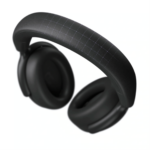PTC collaborates with University of Tokyo to build better replacement hearts.
Increasingly, the design world is turning to medical challenges and asking how engineering principles can be put to work to improve people’s health. Dassault Systèmes has opened up several fronts for medical research through its Biovia and Simulia product groups; the company is also developing tools for simulating the operating of the human heart. PTC, in turn, is working with the University of Tokyo to build replacement hearts for people.
In spite of the huge advances that have been made in heart surgery and heart transplants more than 20 million people worldwide are affected by heart failure says the World Health Organization (WHO), and an additional 2 million new cases are diagnosed every year. Obviously, expensive heart transplant surgery isn’t available to all patients with heart failure. The wait for donor hearts in the U.S. is from six months to three years. The medical industry is looking at other ways to treat heart failure including mechanical systems that can augment the beating of a human heart and also the total artificial heart (TAH), which replaces the heart.
The history of treatment for heart failure has included the use of artificial hearts almost from the start and research goes back to the 1940s. Famously, the first use of an artificial heart was in 1982, when the Jarvic 7 heart was implanted in Barney Clark who lived for 112 days. Artificial hearts have been used as a temporary bridge to help patients survive until a human heart can be found for transplant, ventricular assist devices (VADs) have been implanted to work with the heart and have been successful in children and young adults to give their own hearts a rest so they can recover, and they have been used for who are not candidates for a transplant. Japan has been in the forefront of this work with a high success rate for artificial hearts and VADs.
The University of Tokyo, Graduate School of Medicine is a leader in artificial heart research and has been involved in the field since 1959. They are building a new design built around hydrodynamic levitating impeller lubricated by the blood in the pump and they hope to have this fully-implantable mechanical heart ready by 2016. According to Dr. Takashi Isoyama of the University of Tokyo, who is part of the team doing this work, told us in an email interview, “our artificial heart is designed for destination therapy (DT) that is for long-term, permanent support in end-stage patients who are not candidates for a heart transplant.”

Why PTC? Dr. Isoyama, who has also used Solid Edge and uses Vectorworks for 2D drafting, said that Professor Yoshinori Mitamura of Hokkaido University and Professor Eiki Okamoto of Tokai University introduced him to Pro-E and the consensus was that “Pro-E and Wildfire were very stable.” In addition, Professor Mitamura noted that Baylor University has used Pro-E in the design of their total artificial heart. Baylor is the site of much of the original research on the practical use of artificial hearts. Finally, PTC and the University of Tokyo have a long-standing relationship. Creo is being used at the University for design, studies, and component machining. Isoyama credits the close working relationship with PTC with enabling the team to make significant advances. The software has allowed the team to share visual information including animations and cross-sections of the 3D model. They have used Creo for numerical fluid dynamics simulation, and they are also using the model to investigate ways to maximize performance and improve durability.
Could artificial be better?
Using an artificial human heart has advantages over using a human heart for transplant. For instance, there is no immuno-rejection as could happen with biological transplants so patients do not have to take immunosuppressive drugs. As a result mechanical hearts can restore the patients’ hemodynamic conditions faster, and they are about to be up and around but sooner.
Researchers in medicine are increasingly experimenting with ways to integrate biological materials with non-biological machines to improve the success rates for total artificial hearts. As it turns out, the challenge isn’t just a matter of building a pump, it’s a matter of building a pump that successfully pumps blood says Dr. Isoyama. The challenge is to prevent blood clotting which can be a difficult process to understand. Blood has to keep moving, but also clotting can happen as a result of the blood coming in contact with artificial materials. The resistance to blood clotting, called antithrombogenicity is enhanced by the use of biologic materials where the blood flows through the heart. The University of Tokyo team has developed a special material they’re calling “hybrid material” descriptively enough, which is used for the junction between a machine and the human body. Hybrid materials will improve the odds for success of any artificial organ. Dr. Isoyama says the material consists of a polyester matrix and a donor extra-cellular matrix.
Dr. Isoyama stresses the importance of improving the antithrombogenicity for the inner surface of the blood pump, he says there is more work that can be done there. The ideal would be for the inner surface of the artificial heart to be covered with the patient’s endothelial cells. The hybrid material is a start.
In addition, he says “a native heart is controlled by sympathetic, parasympathetic stimuli and hormones, but an artificial heart is disconnected with them. The control algorithms of an artificial heart should be improved more and more.”
Once again, as design practices advance into ever more complicated territory, it’s clear that solutions in medical bioengineering resemble the new challenges in all of engineering – dealing with the total system or in the cases of medicine the whole body. While Dr. Isoyama says “human heart replacement is the first important step for internal artificial organ therapy. To build a perfect artificial heart, we would need to understand all of human body.”
What do we think?
It’s striking that the leading CAD companies are almost universally recognizing the importance of systems engineering, that designing materials is as important as designing geometry, and that improving the function of mechanical devices means deeper involvement in developing the software. They’re also participating in health care research and this work depends on tightly integrated, but disparate disciplines. It’s going to be one of the characteristics of CAD from here on out.
For instance, new materials are being developed using 3D printing methods to enable biologic material to grow on 3D printed matrices. (For more on this front see the work being done at Organovo, or this paper in Nature Biotechnology.) Or for another high profile example, the development of the Internet of Things means that some things must be developed with an inherent ability to interpret information coming in and act on it, in the same way a perfectly functioning artificial organ can operate independently in the human body. The smarter it is, the better it is.
It’s no wonder that bio-engineering is an inviting field of research for design companies; what may surprise us is that understanding biological functions may lead to better mechanical design.





